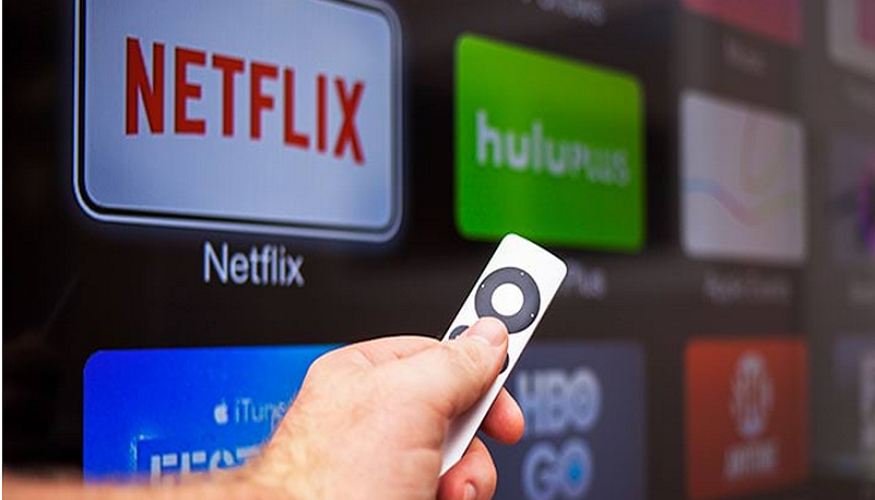Streaming has become the heartbeat of modern entertainment.
It’s incredible to think how far we’ve come from gathering around campfires to share stories to having content streamed instantly to our devices.
This evolution isn’t just about convenience; it’s a testament to how technology continues to reshape our lives.
Ancient Beginnings: Where It All Started
Long before the digital age, entertainment was simple.
Communities gathered around fires to tell tales, share jokes, or perform songs.
These gatherings connected people and brought joy, but they relied entirely on face-to-face interactions.
Back then, the only “stream” people experienced was the flow of words passed down through generations.
The Age of Theaters
With time, entertainment grew more structured.
Theater was born, offering a communal experience where people gathered to watch stories come to life.
Technology was minimal—natural lighting and wooden stages were the tools of the trade.
But it sparked something significant: the idea of shared entertainment on a larger scale.
The Magic of Cinema
Theater soon paved the way for cinemas.
Suddenly, stories weren’t just confined to a live performance.
They could be captured and replayed, expanding audiences far beyond what a single stage could accommodate.
The arrival of black-and-white films and later, colored motion pictures, revolutionized how we consumed entertainment.
Movie nights became a global phenomenon.
People went to cinemas not just for the film but for the experience.
It was the golden era, and technology played a leading role.
Streaming Takes Center Stage
Fast forward to today, and the way we entertain ourselves looks entirely different.
Streaming platforms like Netflix, Amazon Prime, and Disney+ dominate the scene.
At the tap of a button, we can watch whatever we want, whenever we want, wherever we want.
It’s no surprise streaming has become the modern campfire.
Let’s take Netflix as an example.
It didn’t start as a streaming giant.
In the late ’90s, Netflix was a DVD rental service.
Customers ordered movies online, and Netflix mailed DVDs to their doorstep.
But as internet speeds improved and technology advanced, they pivoted to streaming.
This move changed the game entirely.
Now, instead of waiting for days to watch a DVD, you could instantly stream your favorite shows.
The Technology Behind Streaming
What makes platforms like Netflix different from IPTV or cable TV?
The answer lies in how they deliver content.
IPTV, or Internet Protocol Television, uses your internet connection to provide access to live TV or on-demand content.
While IPTV offers affordability and convenience, it comes with challenges like buffering and latency, especially during peak hours.
Streaming platforms, however, leverage advanced Content Delivery Networks (CDNs).
CDNs ensure that content is cached across multiple servers worldwide.
This minimizes buffering, reduces latency, and delivers a seamless viewing experience.
The difference lies in quality.
Streaming giants invest heavily in ensuring 4K Ultra HD content runs without a glitch.
IPTV, while cheaper, often struggles with maintaining the same level of quality during high-demand periods.
The Appeal of IPTV
Despite the technological edge streaming platforms hold, IPTV still has its place in the market.
Its affordability makes it appealing to budget-conscious users.
For someone who wants access to live TV, IPTV is often a go-to solution.
However, when it comes to the battle of quality versus cost, streaming platforms take the crown.
How Streaming Impacts Daily Life
Think about it: just a few decades ago, we needed to schedule our lives around TV programs.
Miss your favorite show? Tough luck.
Today, streaming platforms allow us to pause, rewind, or watch content on our own schedules.
It’s freedom we once couldn’t imagine.
Families now bond over binge-worthy shows on Netflix.
Long commutes are more tolerable because of YouTube and Spotify.
Even casual moments—like waiting in a line—are transformed when we stream music or watch short clips.
Real-Life Example: A World Without Streaming
Imagine going back to a world without streaming.
No more Netflix on a lazy Sunday.
No Spotify playlists during your workout.
It’s hard to even picture how much we relied on CDs, DVDs, or linear TV in the past.
Take households where every family member watches something different at the same time.
Streaming technology makes this possible.
No fighting over the remote, no missing out.
What the Future Holds for Streaming
Streaming isn’t done evolving.
With advancements in technology like 5G and cloud computing, the experience will only get smoother and faster.
Interactive streaming—where viewers can decide plot outcomes in real time—might become more popular.
IPTV, too, could see advancements.
Better networks might reduce lag issues, leveling the playing field with streaming platforms.
But the focus will likely remain on innovation.
Streaming services are investing heavily in original content, interactive features, and personalized recommendations.
The Ultimate Choice
At the end of the day, the choice between IPTV and streaming platforms boils down to personal preferences.
Do you prioritize cost or quality?
Do you need access to live sports and news, or are you more into on-demand series and movies?
Whatever your choice, both IPTV and streaming platforms reflect how far entertainment technology has come.
From ancient storytelling to cutting-edge streaming technology, the journey has been remarkable.
Closing Thought
Streaming has not only redefined how we consume content but also how we connect.
Whether it’s bonding over a shared love for a Netflix series or revisiting nostalgia with a classic movie, technology has made entertainment more accessible than ever.
The best part?
The story of streaming is far from over.
And who knows—maybe the next big shift in entertainment is just a click away.

